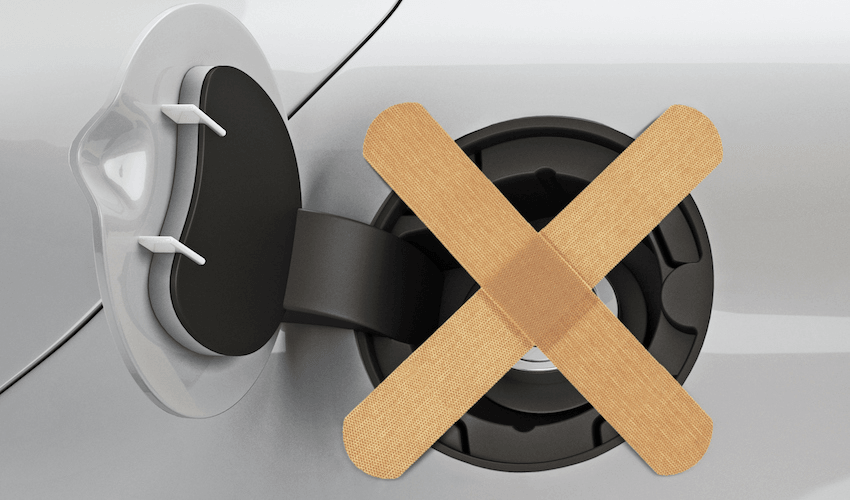A leaked email from a BP manager has exposed the tactics fuel retailers employ to increase prices at the pump. But do we all just pay too much anyway? Here’s ten numbers which show we’re paying a premium for petrol.
20 cents
How can it be that petrol prices at the BP petrol station in Otaki are 20 cents per litre more expensive than the other BPs in the surrounding towns of Levin and Paraparaumu? Yesterday, a leaked email from the petrol retailer lifted the lid on its regional price-setting tactics, and how it hikes prices and watches its competitor’s follow suit.
Expensive Otaki was sustaining losses. So what did BP do? The email says: “Rather than just reducing the price in Otaki we will be looking to increase the price at Paraparaumu & Kapiti and also Levin. We have already increased all three sites mentioned by 5cpl and have found that the Z in Paraparaumu has already matched our pricing.”
The email is an embarrassing blip; petrol companies like to masquerade that New Zealand petrol prices are at the mercy of international movements and they’re an uncontrollable force. But it’s long been suspected regional markets were being utilised to cross-subsidise, meaning aggressive prices and losses due to competition in Auckland for example were being recouped in the regions with little competition, like Wellington.
2017
But everything is expensive in New Zealand so why would petrol be any different? We’ve heard all the lines before. We’re a small market. We’re really far away. We have to import fuel. Infrastructure is expensive! It costs money to have a Wild Bean Cafe OK? Those loyalty programmes aren’t cheap either. But when even former transport minister Judith Collins is pretending she’s worried about petrol prices maybe its time to take notice? In February last year Collins announced a market study into petrol prices after fuel margins doubled over five years.
2008
Fuel importer margins (an indicator of gross profit made on retail sales of petrol and diesel) reached a historic low in 2008. Yay! But a recent report found importer margins have been trending upward ever since December 2008. It says, “officials… have noted with increasing levels of concern the rise in importer margins since 2008, and more specifically since 2011 when Z Energy advised officials that it had changed its pricing strategy to favour margins over volumes”. And further: “There is the clear impression that margins have been managed upwards.” Why would that happen?
2010
Partly, this rise in margins has been pinned on Shell’s exit from the sector in 2010. There had been, since Shell’s sale to Z, the government report says, “a weakening of competitive intensity (e.g. a change in Z Energy’s pricing strategy after it acquired Shell) – prior to this Shell had tended to be slow to follow competitors’ price increases and quick to lower the price”. Come back Shell and bring that awesome logo back would ya. It’s also worth noting that in 2010 petrol prices were reportedly among the lowest in the OECD.
$8 billion
So how much do we pay for petrol in total? In 2016, New Zealanders spent between $8 billion to $9 billion on petrol and diesel, and it’s estimated we spent (on average) about $1500 on petrol each in the same year.
$32 million
MBIE says each 1 cent per litre rise in the price of fuel costs Kiwis about $32 million a year. $32 million! (Let’s not mention the regional fuel tax now eh). It says “this means that the potential wealth transfer from consumers to fuel suppliers since 2008 is likely measured in the hundreds of millions of dollars per annum”. HUNDREDS OF MILLIONS.
66.484 cents
Hey but its not just petrol companies (and soon councils) that are clipping the ticket and making bank from fuel. The government takes in tax (fuel excise) from every litre of petrol you buy, totalling more than 66c per litre. Most of this (about 59c a litre) goes to the National Land Transport Fund which is then used to build roads and the like, and to the Accident Compensation Corporation (6c a litre).
15%
AND, so lucky, we also get to pay GST when we buy petrol. Yep, more tax. The last National government (yeah, the anti-tax crew) actually raised GST, from 12.5% to 15% because GST is a great tax; it gets everyone. Maybe they figured some people were really good at dodging other taxes?
1
Well, we may have been among the cheapest countries in the OECD for petrol in 2010 but by the end of 2016, a government report says, we were number 1 in terms of being the most expensive in the OECD. Go us?
3
The big three are Z, Mobil and BP. Why does it matter if you only have these three in your area? The MBIE report spells it out. “The Wellington market shares a common characteristic to the South Island in that the three majors (Z Energy, BP and Mobil) own all terminal assets and supply all downstream petroleum products. In the rest of the North Island, Gull is able to supply its retail network from its own terminal assets at Mt Maunganui.” What premium does this add? In the 2017 financial year the average gross margin difference between the South Island (and Wellington) and the North Island (excluding Wellington) was 9.8 cents per litre. About the same as Auckland’s proposed regional fuel tax.
The Spinoff’s business section is enabled by our friends at Kiwibank. Kiwibank backs small to medium businesses, social enterprises and Kiwis who innovate to make good things happen.
Check out how Kiwibank can help your business take the next step.
